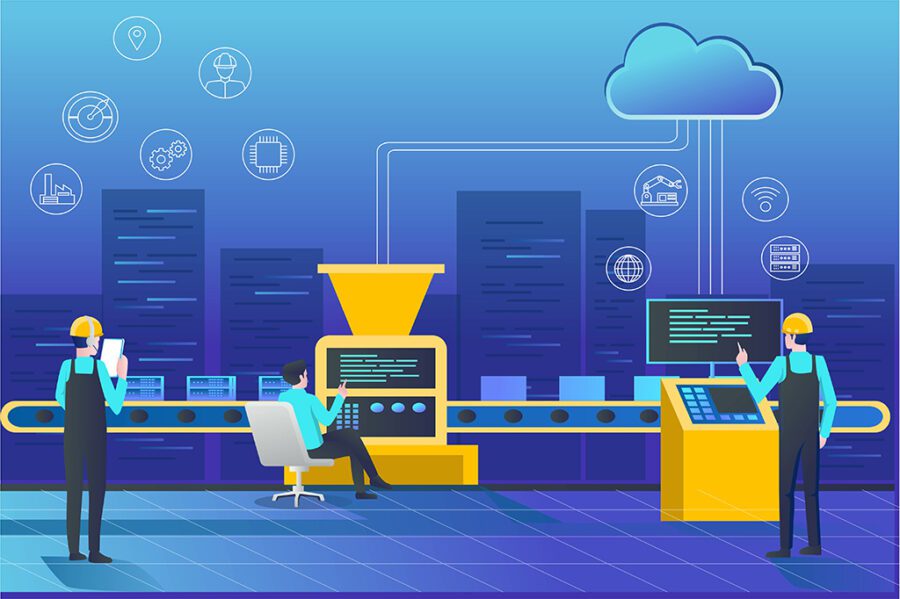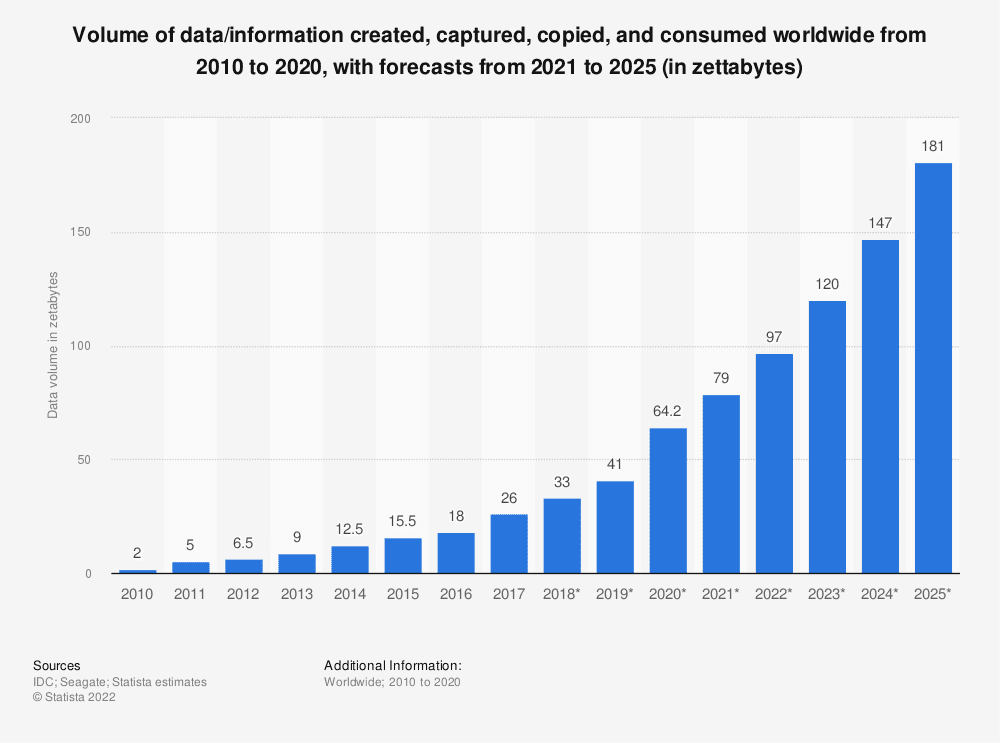
Businesses, whether big or small, know that understanding data is essential to making informed decisions that impact the organization’s bottom line. The emergence of new data from embedded devices, mobile, and Internet of Things (IoT) is accelerating and complicating insights. Here’s what Statista said in the recent reports, “In 2021, it was projected that the overall amount of data created worldwide would reach 79 zettabytes, and would more than double by 2025 with no end in sight.” (Reference as illustrated below)

Image Source: https://www.statista.com/statistics/871513/worldwide-data-created/
The same report also states the factors contributing to the rapid growth of data traffic. “It is the Internet of Things (IoT), which already connects the digital and physical worlds through a network of sensors. The data volume created by global IoT connections reached 13.6 zettabytes in 2019 and is forecast to amount to over 79 zettabytes by 2025.”
Apart from this, the proliferation of business intelligence tools, growing diversity of machine and human-generated data, Artificial Intelligence, Machine Learning, Blockchain, etc., are opening
more ways for information management and interpretation. But, accessing this data poses a challenge for many organizations.
Harnessing data for informed decision-making gets difficult, especially when reporting and utilities are across multiple vendors or paper-based. As a result, manual data entry and collection limits an organization’s ability to understand its data usage on a granular level. Advanced technological solutions address such challenges effectively; however, several companies have been slow to adapt their workflows and processes to take advantage of more scalable data collection options.
Confronting Data Collection Challenges with Automation
Though data-driven decision-making is crucial for creating values and driving businesses in the right direction, it needs a mix of capabilities and actions—some technical, some not. Automated data collection solutions combine human intelligence with RPA, AI, and ML. Whether proprietary or public data, organizations can transform their raw unstructured data into tagged and schema-compliant XML fit for data products, analytics, AI/ML applications, etc.
Listed here are the leading-edge tools and software for data capture and collection processes:
● Optical Character Recognition (OCR)
One of the well-established and proven technologies is Optical Character Recognition. Even after disrupting the traditional approach to document management once, this technology remains as relevant as ever.
It is perfect for digitizing huge piles of electronic and paper documents and is widely used across healthcare, logistics, banking, finance, governing, and more. Multipurpose OCR systems not only reduce the costs of capturing data, but also help in automating routine manual tasks. This helps in freeing human resources from doing mundane, repetitive tasks. In short, the OCR solution is a prerequisite for cost-efficient document management.
● Optical Mark Recognition (OMR)
Optical Mark Recognition is another approach to managing documents. It is used to capture and speed up human-marked data. For example, multiple-choice tests, the results of polls, surveys, consumer feedback, and so on. After scanning the documents, the Machine Learning algorithms detect the location. It can recognize hand-written marks much faster than human employees. Hence, businesses can complete routine tasks time- and resource-efficiently and foster workflow automation.
● Intelligent Character Recognition (ICR)
Intelligent character recognition aims at solving more sophisticated challenges. Using this technology, machines can easily process raw, hand-written documents. The level of accuracy varies from 50% to 70%—depending on cursive handwriting, block letters, fonts, styles, etc. Bonus point, this level of accuracy can be improved via further training the Machine Learning algorithm on rich datasets of specific data.
● Intelligent Document Recognition (IDR)
Volumes of unstructured documents are produced in complex business processes, taking the case of the logistics and finance industry. Intelligent Document Recognition can extract data from any document part, including meta description. It not only incorporates the capabilities of OCR but also enhances it. IDR technology can interpret tables, patterns, and content in electronic and paper formats by recognizing the beginning and end of documents and categorizing them. Any required data can be extracted, whether stored in a database or used in business apps.
● QR Code Recognition
As data occurs in different formats, for instance, being encrypted in QR codes, automated data capture can be conducted via different systems. This scan-and-go system has transformed the traditional way of shopping by facilitating hassle-free payments, check-out-free stores, self-servicing, etc. QR code recognition has become a novel solution for many industry giants like Walmart, Amazon, Starbucks, and the likes of the same for capturing data on merchandise and making payments.
● Voice Recognition
Voice assistants like Siri, Cortona, Alexa, and Google Assistant are powered by Natural Language Processing (NLP) technology. Simply say “Hey Siri” or “Google” to awaken the system, dictate the command, and get your answer.
NLP approaches based on deep learning algorithms are used in different areas such as marketing, interpreting, security, support services, etc. NLP embedded in electronic data capture systems helps collect clinical trial data or patient data that can be entered manually or via voice.
Final Words
Decisions, processes, and actions that use data can be automated in a variety of ways, as stated, but fall somewhere between mostly human-based and completely automated. In the age of Machine Learning and Artificial Intelligence, companies that embrace some degree of automation in their core processes, such as data collection and capture processes, are more likely to gain a competitive advantage—through rapid, granular, and more sophisticated decision-making. Gartner also predicts that by 2025, “95% of decisions that currently use data will be at least partially automated.” Hence, leaders can efficiently create decision intelligence with organizational competency.
